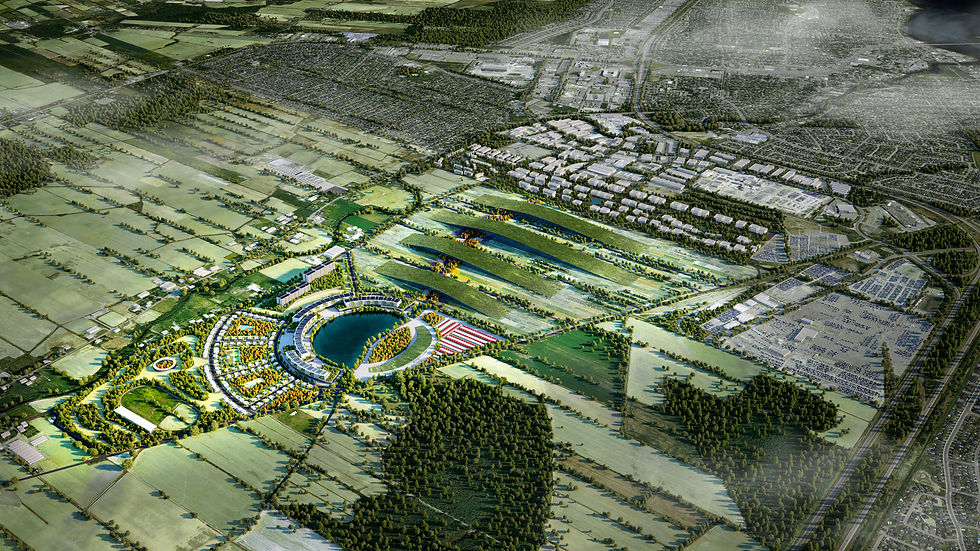Green roofs to make up for real parks
- Francesco Procacci
- Nov 3, 2019
- 3 min read
Rethinking of urban planning standards in the globalisation era and crisis of the local and national governments.

It is becoming more and more frequent, in architectural and scale design practices of major urban interventions, especially in countries with strong urban development dynamics such as South East Asia and Vietnam, to propose "green" solutions, placing mostly trees on the facade and in the balconies or unlikely lawns on top of the roofs.
This trend is obviously not new or confined only to Asian countries; I am certainly not the first to comment on the inappropriate use of architects and urban planners (including the writer) to mask operations of mere building speculation.
However, if it seems to be more known, for example on other well-known architecture blogs such as Archidaily, their spurious use and often stylistically unfounded, I would like to underline here another point that I believe is journalistically less treated and less known, even in the debate more high of universities and institutions.
The focus on the environmental sustainability of the building, even if it is the result of good LEED design and energy saving practices, cannot be limited to such technical and engineering solutions, whether they are applied to the single building or to the urban scale including modern technologies of smart city.
Above all, it cannot forget the most important concepts of social, economic, infrastructural, as well as obviously environmental sustainability with respect to the entire neighborhood and city and not simply linked to the single building or residential complex.
The risk, in these narratives used by designers (more or less aware) and real estate developers, is to hide the real problems of good design compared to the social and economic characteristics that every intervention should bring, such as the concrete benefits to the local community in which the urban intervention is placed. For example the creation of parks and gardens open and accessible to all inhabitants, the creation of squares and meeting places, public bookstores and spaces for sports or for various events.

This concept and principle of territorial planning, otherwise known as "urban standard", cannot be supplanted by mere public-private negotiation, especially in times of loss of relevance of the role of the public and the state in the processes of government of the economy, at least in western countries but unfortunately in trends that can be found also in many countries of south-east Asia, despite the "socialist" regime.
On the other hand, as often happens in the debate by experts on the urban standard, this cannot be supplanted (by what?) or exceeded because in the past it is not effective to respond to the changing reality of the needs of citizens or because rigid and financially burdensome tool for local administrations. How to throw the baby in dirty water.
An urban planning of the city that was inspired by principles of real sustainability of the transformation and new construction interventions, should have at heart the rethinking of urban planning standards today, through the real participation of all urban actors in their definition and implementation.
The green roof thus becomes, in the final analysis, the falsely sustainable façade for operations of aggression and ultra-capitalist appropriation of the common assets of the city by powerful financial and real estate groups, which find their most effective weapon in sustainable rhetoric to reap more profits.



Comments